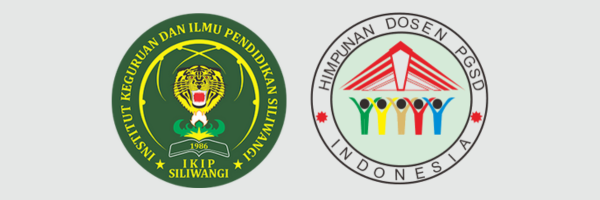PROBLEM-BASED LEARNING (PBL): CAN IMPROVE HIGHER-ORDER THINKING SKILLS (HOTS) OF PROSPECTIVE ELEMENTARY SCHOOL TEACHER STUDENTS?
DOI:
https://doi.org/10.22460/pej.v5i2.2761Abstrak
Mastery of 21st-century skills is one of the goals in learning activities. One of the factors to consider is that the teacher must have HOTS as the spearhead of learning. This study aims to improve HOTS, namely critical thinking skills and creative thinking of prospective elementary school teacher students through PBL. This study uses a pre-experimental method with a one-group pre-test-post-test design. The research instrument used was a description test of 15 items. The sample of this research is 30 students of STKIP Bina Mutiara Sukabumi PGSD Study Program. The results showed that the HOTS of prospective elementary school teacher students at STKIP Bina Mutiara Sukabumi increased by using PBL. The t-test results obtained were 0.00 < α = 0.05, indicating that this learning model significantly influences students' HOTS. The gain test results obtained an n-gain value of 0.34, which indicates that the increase in student HOTS is in the "medium" category. The details of the results of each HOTS aspect during the post-test were in the "good" category, namely fluency, flexibility, originality, and evaluation. Aspects of elementary clarification, basic support, inference, advanced clarification, strategy and tactics, are in the "enough" category. The last HOTS aspect, namely elaboration, is in the "less" category.
Referensi
Aswan, D.M., & Sumarmin, L.L.R. (2018). Influence of problem based learning on critical thinking skills and competence class viii smpn 1 gunuang omeh, 2016/2017. ICOMSET IOP Publishing. IOP Conf. Series: Materials Science and Engineering, 335 (2018) 012128 doi:10.1088/1757-899X/335/1/012128.
Awang, H. & Ramly, I. (2008). Creative thinking skill approach through problem based learning: pedagogy and practice in the engineering classroom. World Academy of Science, Engineering and Technology International Journal of Educational and Pedagogical Sciences, 2(4).
Akcay, Behiye. (2009). Problem-based learning in science education. Journal Of Turkish Science Education, 6(1), 26-36.
Alghafri, Ali Salim. (2014). The effects of integrating creative and critical thinking on schools students thinking. International Journal Of Social Science And Humanity, 4(6), 518-525.
Arikunto, S. (2010). Prosedur penelitian: suatu pendekatan praktik. Jakarta: Rineka Cipta.
Armitage, E., Pihl, O., & Ryberg, T. (2015). PBL and creative processes. Journal of Problem Based Learning in Higher Education, 3(1), 1-4.
Birgili, B. (2015). Creative and critical thinking skills in problem-based learning environments. Journal of Gifted Education and Creativity, 2(2), 71-80. doi: 10.18200/JGEDC.2015214253.
Çetinkaya, C. (2013). The effect of gifted students’ creative problem solving program on creative thinking. 5th World Conference on Educational Sciences - WCES 2013. Procedia - Social and Behavioral Sciences,116 (2014), 3722 – 3726.
Hake, R., R. (1998). Interactive-engagement versus traditional methods: a six-thousand-student survey of mechanics test data for introductory physics courses. Am. J. Phys. 66, 64 (1998). doi: 10.1119/1.18809.
Handayani, S.A., Rahayu, Y.S., & Agustini, R. (2021). Students’ creative thinking skills in biology learning: fluency, flexibility, originality, and elaboration. MISEIC 2020. IOP Publishing. Journal of Physics: Conference Series. 1747 (2021) 012040 doi:10.1088/1742-6596/1747/1/012040.
Karakoc, Murat. (2016). The significance of critical thinking ability in terms of education. International Journal of Humanities and Social Science, 6(7), 81-84.
Kristianto, H., Hudaya, T. (2018). Penerapan model pembelajaran berbasis masalah (problem based learning) dalam mata kuliah manajemen limbah b3. Jurnal Pendidikan Sains (JPS), 6(2), 41-47.
Larsson, Kristoffer. (2017). Understanding and teaching critical thinking a new approach. International Journal of Education Research, 32-42.
Larson, L. C., & Miller, T. N. (2012). 21st century skills: prepare students for the future. Kappa Delta Pi Record, 47(3), 121-123.
Lindvang, C., & Beck, B. (2015). Problem-based learning as a shared musical journey – group dynamics, communication and creativity. Journal Of Problem Based Learning in Higher Education. (JPBLHE), 3(1), 1-19. http://dx.doi.org/10.5278/ojs.jpblhe.v3i1.1200.
Nugraha, Widdy Sukma. (2018). Peningkatan kemampuan berpikir kritis dan penguasaan konsep ipa siswa sd dengan menggunakan model problem based learning. Jurnal Pendidikan Dasar, 10(2), 115-127.
Nuswowati, dkk. (2017). Implementation of problem-based learning with green chemistry vision to improve creative thinking skill and students creative actions. Jurnal Pendidikan IPA Indonesia, 6(2), 221-228.
Pebriana, R, & Disman. (2017). Effect of problem based learning to critical thinking skills elementary school students in social studies. Journal Of Elementary Education, Primaryedu, 1(1), 109-118.
Rerung, N., Sinon, I.L.S., Widyaningsih, S.W. (2017). Penerapan model pembelajaran problem based learning untuk meningkatkan hasil belajar peserta didik sma pada materi usaha dan energi. Jurnal Ilmiah Pendidikan Fisika Al-BiRuNi, 6(1), 47-55.
Romanoff, K.M., Rae, A., & Zakrzewski, C.E. (2019). A holistic and multifaceted model for ill structured experiential problem based learning: enhancing student critical thinking and communication skills. Journal of Problem Based Learning in Higher Education, 7(1), 70-96. 10.5278/ojs.jpblhe.v7i1.3341.
Rospitasari, dkk. (2017). The effect of science inquiry learning model and creative thinking skills on student’s science process skills. IOSR Journal of Research & Methode in Education (IOSR-JRME), 7(4), 55-57.
Rudibyani, R.B. (2019). Improving students’ creative thinking ability through problem based learning models on stoichiometric materials. YSSTEE2018. IOP Publishing. IOP Conf. Series: Journal of Physics: Conf. Series 1155 (2019) 012049. doi:10.1088/1742-6596/1155/1/012049.
Simamora, S. J., Simamora, R. E., & Sinaga, B. (2017). Application of problem based learning to increase students’ problem solving ability on geometry in class x sma negeri 1 pagaran. International Journal of Sciences: Basic and Applied Research (IJSBAR), 36(2), 234–251.
Snyder, L.G., & Snyder, M.I. (2008). Teaching critical thinking and problem solving skills. The Delta Pi Epsilon Journal, 50(2), 90-99.
Sugiyono. (2014). Metode penelitian kuantitatif, kualitatif, dan r&d. Bandung: Alfabeta.
Yarbrough, Nukhet D. (2016). Assessment of creative thiking across cultures using th torrance tests of creative thiking (ttct): translation and validity issues. Creativity Research Journal, 28(2),a 154-164.












